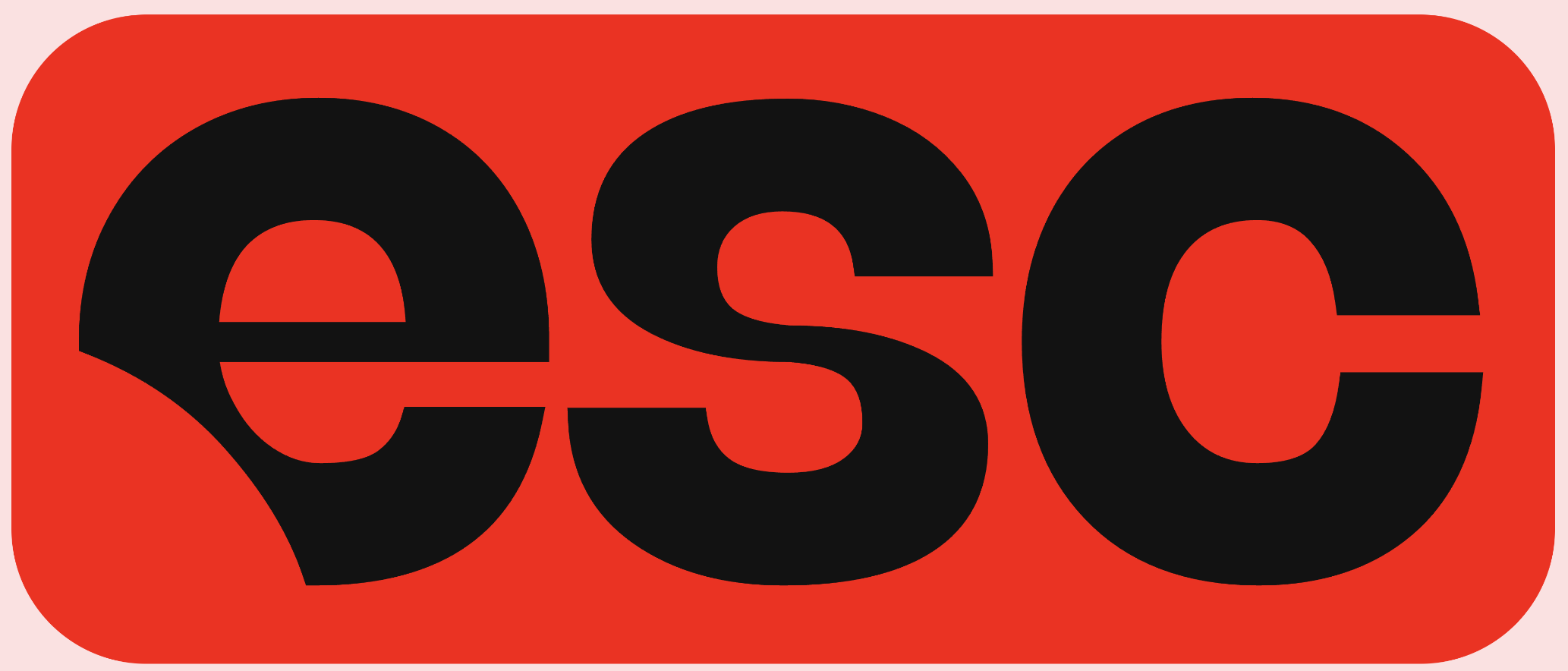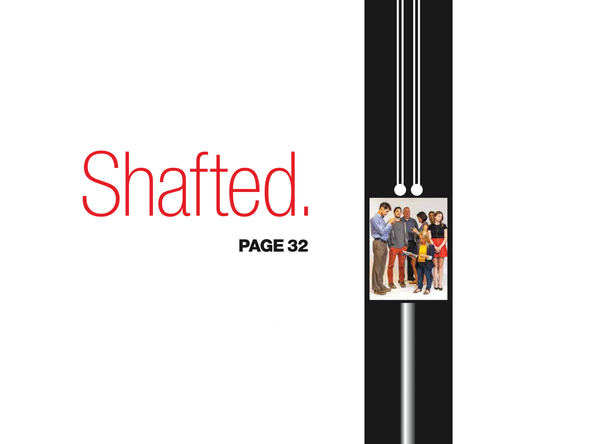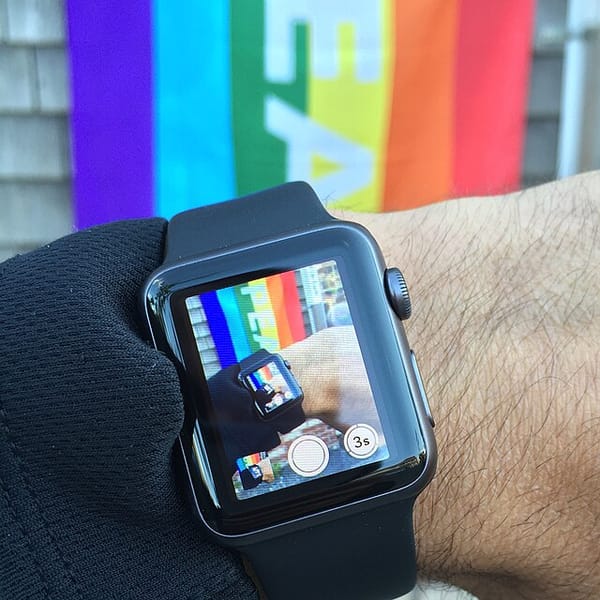Heatwave brain: The absurdity of “productivity” discourse that ignores our burning planet
Your TL;DR Briefing on things worth tracking — and talking about over your next power lunch. *Wink.* This time the thing is the way climate change is tanking the world’s productivity, but venture capitalists would rather you not talk about actual productivity solutions.

The thing is:
“In the midst of London’s swampy heat wave this week, I felt it was too hot to write a deep-dive briefing. Equally distracted with too many headlines about too many wars, I have decided to end my draft with this sentence.”
I regret to inform you that I almost sent the email just like that: two lines, no briefing. But I knew it was my “heatwave brain” doing the talking.
Indeed, there was a moment where I seriously considered publishing an incomplete article, with the TL;DR Briefing subheadings appearing as usual but with nothing but “TK” underneath each: “The thing about that is: TK,” and so forth. TK being journo-speak for “to come.” Sometimes you’ll even see it slip through in live copy, a relic of overworked editors and chaotic deadlines. “TL;DR TK?!” felt appropriate. I wondered if this would be a clever way to mask the fact that I was a tad bit delirious from the United Kingdom’s hottest week of the year. Maybe even a radical performance of Paul Lafargue’s 1883 polemic “The Right to Be Lazy,” the first selection in ESC KEY .CO’s Public Domain Reading Club?!
Or, to over-intellectualize it further, maybe it was a kind of artistic statement? What non-finito is to sculpture, my incomplete briefing could be to digital publishing? “TL;DR Non-finito!” A sophisticated gesture expressing the collective exhaustion that the week’s headlines provoked?! But frankly, I was just fried.
This morning, while finishing this actual briefing, the heatwave dissipated and my mind rebooted. I reflected on the happy hour I attended on Thursday. A few journalists and collaborators popped a couple bottles at the Thames-side pavilion outside Somerset House, a low-key gathering of people who’ve worked on environmental and human rights issues in fashion and beauty for years. It was cute and chatty … except for me. I was a melting mess.
Indeed, Thursday was the hottest day of the year here, with temperatures in muggy London hitting 32.2 degrees Celsius, just shy of 90 degrees Fahrenheit. That may sound tame to readers in much hotter regions, and even to my East Coast-born self. When I first moved to this country, I laughed that a typical July day in Washington, D.C. could feel like a crisis in the Big Smoke. But London wasn’t built for this. There’s barely any air conditioning; stuffy offices turn into impromptu saunas; the only relief is the freezer aisle. (Across the city, popsicles and ice cream bars had sold out. I know this because I checked three supermarkets along the Strand, all of which had empty freezers.)
That evening on the terrace, talking to some very smart people, Heatwave Me swirled champagne, rambled incoherently and made jokes that — if I’m honest — weren’t funny.
One lovably blunt colleague told me as much: “I don’t really get your humor, JD,” they said with a kind, winking smile. “It goes straight over my head.” I swirled my little flute again and changed the subject.
So today, as my writerly spirit was restored with a cooler breeze, I imagined that friend reading my incomplete email. I realized: TL;DR Non-finito probably wouldn’t translate.
I’ll forgo the stunt. Instead, let me tell rather than show: My point is, every heatwave provokes conversations about the climate emergency which often betray our own biases and privileges.
Climate change is very bad for productivity. And if I’m complaining? Let’s remember: we MacBook-toting knowledge workers are in the global 1% when it comes to climate privilege. Our complaints — too-hot cafes, sleepless nights in overpriced flats, empty freezer aisles — are inconveniences. But for many, including some people in this country, rising temperatures can be fatal.
I’m not trying to rain on the happy hour with this fact. Instead, I want to highlight the absurdity of productivity narratives and underscore the wealth dynamics that shape how one-dimensional “climate change” conversations often are.
While one of the industries I know best as a journalist — fashion — might prefer to talk about insincere climate targets rather than garment workers fainting in extreme heat, the biggest brands’ supply chains are frequently sites of climate misery. That’s bad for human rights, period. It’s bad for the brands’ “productivity,” too, but they’d rather change the subject.
The thing about that is:
Across industries, the productivity discourses du jour are mostly a con, a red herring, a deceptive distraction engineered by the world’s ruling classes to avoid questions about their own management failures. (Which are, as a reminder, the reason we’re in this mess to begin with.)
While I wilted in London’s 32.2 C, workers stitching clothes for the biggest brands have endured factory temperatures exceeding 40 C without air conditioning. In Cambodia, for instance, thermal sensors found 64% of garment workers recorded dangerous core body temperatures above 38 C during their work weeks. This time last year, during Cambodia’s worst heatwave in decades, 22-year-old Aysha Talukder Tanisa told Context that while making jeans in Dhaka, her colleagues would “fall sick, vomiting or swooning due to the boiling heat.” All for more clothes than the end consumers need.
But here’s what's particularly maddening in my mind: at the same time as all that’s going on, much of the media continues to breathlessly cover how “AI” might lead to promised productivity gains in virtually every sector. In other words, we’re pumping billions into large language models, all in the name of some unclear and unspecified efficiency gains. Meanwhile, heat stress is already costing 2.2% of global working hours — equivalent to 80 million full-time jobs by 2030, according to the International Labor Organization.
In this way, productivity discourse has become completely unmoored from reality. For instance, in the case of productivity in fashion manufacturing, the biggest brands are not investing in adequate factory cooling systems that would deliver immediate, measurable productivity increases. Rather, some fast fashion brands are investing in “AI” tools that promise speculative future gains.
And what few emissions reductions we’ve made in other sectors risk being offset by this energy-guzzling tech. “The global rush to AI technology will require almost as much energy by the end of this decade as Japan uses today, but only about half of the demand is likely to be met from renewable sources,” Fiona Harvey, environment editor at The Guardian, recently wrote. Harvey was citing a new report from the International Energy Agency, which found that even though some climate threats of “AI” may be “overstated” the hype-driven development nonetheless amounted to a “sharp rise” in emissions.
It’s not even clear if “AI” will lead to substantive productivity gains, as there’s little consensus among researchers. But even if some not-yet-seen efficiencies are achieved at a significant scale, the environmental costs from developing the tech would seem to, again, offset those in return.
All the while, climate change’s drag on productivity is only getting worse. And that will keep accelerating if current trends continue.
Where things get interesting:
I hate that this sentence is necessary: “Climate change is bad for business.” But it’s true. Even if we’re not overthrowing capitalism, let’s at least be honest about the fact that the economics are so clear, the avoidance borders on the absurd. So few people in power seem to connect the dots to address the full picture: “Extreme heat and flooding could erase $65 billion in apparel export earnings by 2030 from Bangladesh, Cambodia, Pakistan and Vietnam” alone, according to a report in Reuters. That’s only in fashion.
Even as brands aim to avoid addressing the root causes of climate change, solutions to factories overheating do exist — and they’re not that costly or energy intensive. Take what’s known as “evaporative cooling systems.” They use much less energy than traditional air conditioning while effectively reducing the temperatures on factory floors. The math isn’t complicated, either: every dollar spent on factory cooling pays for itself over time through productivity gains and reduced worker turnover.
Yet a 2024 report from Cornell University’s Global Labor Institute found only three major retailers — Nike, Levi's, and VF Corp — had implemented specific heat protection protocols for suppliers. While there are likely a few more brands than three with some policies on this issue, the point remains: most large brands aren’t taking extreme heat events seriously in their supply chains. Workers pay the costs. (As with many issues in fashion, brands rarely want to pick up the tab to address their supply chain’s problems.)
What finally forced some accountability wasn’t corporate conscience but European regulation. The EU’s Corporate Sustainability Due Diligence Directive makes retailers legally liable for supplier working conditions, creating the financial pressure that decades of voluntary commitments couldn’t deliver. But some of Europe’s most powerful leaders, including in France and Germany, are already calling to scrap the law.
It may at first appear unrelated, but the same world leaders’ affinity for “AI” productivity theatre is instructive here. We’re witnessing massive capital deployment based on productivity promises from technology that demonstrably increases energy consumption while delivering questionable efficiency gains. Two cases in point: In 2023, Google’s AI operations drove a 13% emissions increase despite carbon neutral pledges. Meanwhile, Microsoft’s emissions jumped 29% since 2020 due to “AI” data centers.
But mention spending similar amounts to prevent workers from collapsing in 40 C factories? Suddenly we need extensive cost-benefit analyses. And even when it’s there, it’s rarely a priority.
The thing to talk about over your next power lunch:
Taking action to protect human rights and the climate should not need justification based on economic gains. And yet, in cases like these, it is so easy to make such a case! The small-c “conservative” business angle here writes itself. If big business can stomach spending billions in “AI” investments for hypothetical productivity gains, why is there no similar movement to put in place proven solutions like factory cooling, which deliver immediate, measurable productivity gains? The question reveals how corporate productivity discourse serves establishment ideology rather than sensible economic policy.
What does it mean that “climate action” prioritizes emissions accounting over protecting workers from climate breakdown? We see brands such as Nike promoting its “Move to Zero” carbon reduction while owing 4,000-plus garment workers $2.2 million in back wages and benefits. Abstracting climate discourses to “carbon footprints” makes it too easy to leave out the rights of the predominantly Black and brown garment workers who are most harmed in the process.
Everywhere you look, from fashion to tech, you see such examples of what United Nations experts have termed “climate apartheid,” protecting the assets of corporations and the wellbeing of the wealthy while sacrificing the human rights of the most impacted.
Is our era’s obsession with “AI” productivity" just sophisticated procrastination and a distraction from these issues? We’re optimizing algorithms and large language models — yes, products with labor and environmental consequences across their own tangled supply chains — while the physical world literally burns.
The most obvious and urgent productivity crisis, workers unable to function in extreme heat, gets ignored because it requires acknowledging that our supply chains depend on human suffering and systems of colonialism.
Both climate justice and productivity conversations need to start with the people who are experiencing the disproportionate effects of our economic system’s environmental impacts. Often, that’s the humans producing our stuff.
Otherwise, we’re just rearranging deck chairs on a melting planet.
Back to my admittedly sometimes esoteric humor: Thursday’s al fresco soiree was a reminder that no matter how serious the issues we’re working on are, we still need a few moments of joy with our people amid the overlapping crises to keep ourselves sane and motivated.
But we also need to acknowledge in plain language when the hegemonic narratives distort reality to such a degree that we start to orient ourselves within their distortions. And in an age of “AI” productivity porn, that’s often what some of the most powerful bosses are busy distracting us with.
I hope we can collectively “get” this one — not just the joke, but the stakes. *Swirls my little flute of champagne, aware of the absurdities.*
And one long thing to read:
Do you want some ideas on how to channel that frustration and sense of injustice into action? Last month, we took a deep dive into the ways to call out climate bullshit, which has a taxonomy for the six kinds of greenwashing (i.e., six more reasons to get angry and then do something with that anger!):







